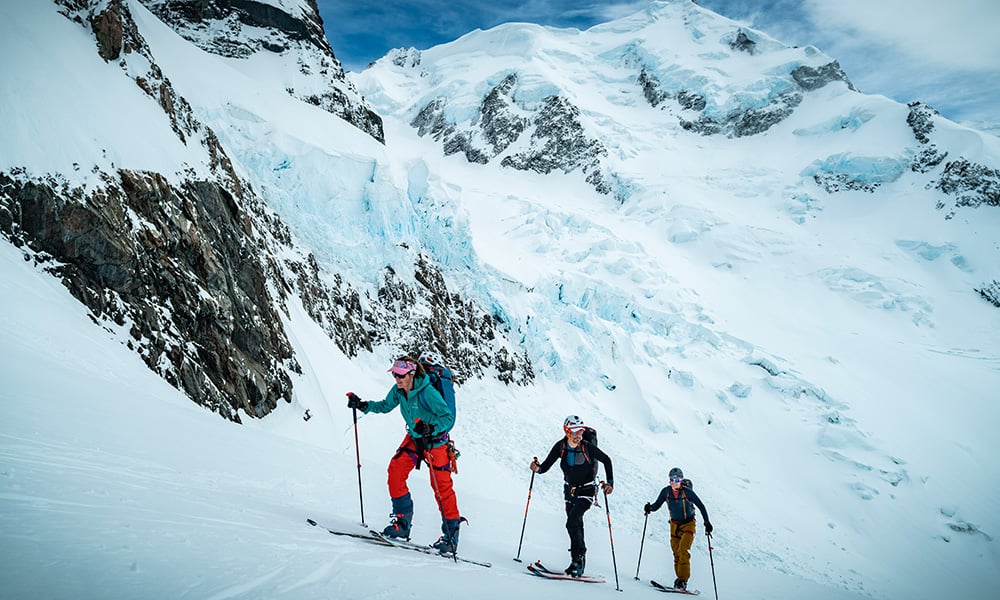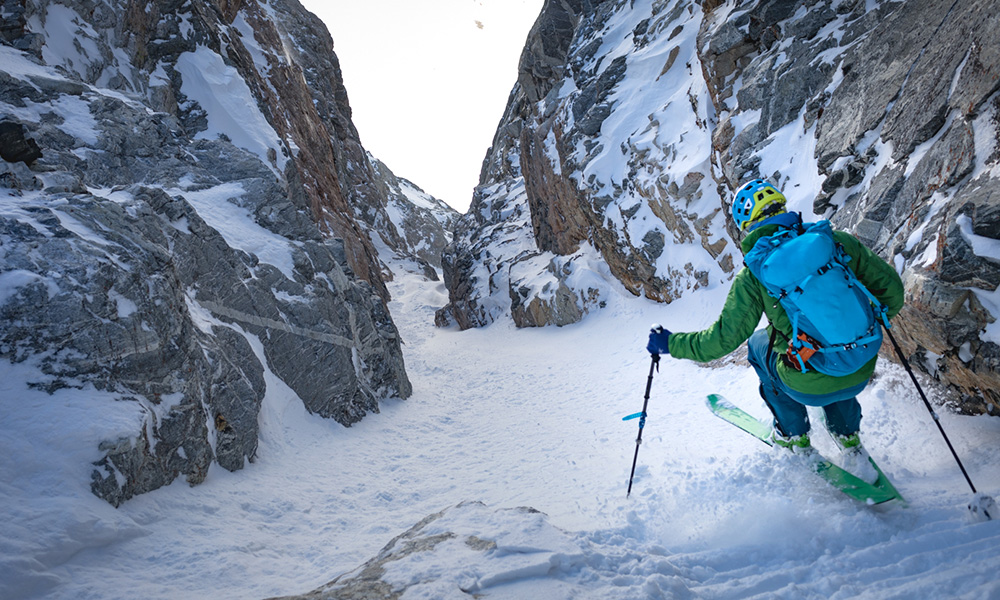
© Mark Smiley
Suunto ambassador, filmmaker, and alpine pro Mark Smiley is currently in New Zealand, and preparing to climb Mt Cook (3724 m), the country’s tallest mountain.
“My phone is downloading the topographical and satellite images for Mt Cook as we speak,” he says. “Having never been here before, I want to make sure I climb the right couloir.
“Selecting the right path up a mountain is a fun art to practice. The goal is to get to the top with as much go-juice in your legs as possible so you can slay the down like a boss.”
Mark is passionate about outdoor education and helping people to stay safe in the mountains. He has just released his latest online training course, perfectly timed to get skimo fans ready for the winter. The Ultimate Guide to Backcountry Skiing & Ski Mountaineering online course is a deep dive into all aspects of the sport.
The first 200 skiers to sign up for the course before November 25, and who use this coupon code: EARLYBIRD40, will receive a 40% discount on the original price. The first 50 students to sign up will also get Mark's Crevasse Rescue online course for free!
“Really I made this new course for my 26-year-old self,” Marks says. “Had I had this helpful resource 12 years ago, I would have been skiing bigger lines, more safely, in a fraction of the time.”
As a taster, here are Mark’s 7 tips to find a safe track up the mountain.
Pre trip
To make this article easier to digest, we’ve separated Mark’s tips into pre and in-trip groups. “The key is to do your homework,” he says. “That is the first priority.”
Signs of a good track
1. It doesn’t expose you to avalanche risk.
2. A gradual mellow slope, with a nice run out, where the avalanche debris would have plenty of space to fan out.
3. Look for nice straight lines with a consistent incline. Eighteen degrees is a pretty good place to start.
4. Switchbacks that are in the best place possible, often that’s just downhill of trees (if you are below the treeline), or in any slightly less steep areas.
5. Following a ridgeline or pushing up through dense forest is usually safer than ascending via a face and sparse forest.
Signs of a risky track
1. Unsupported convex rolls are a big avalanche risk. A convex roll is a part of the slope that bulges out. Imagine putting a salad bowl against a wall, then putting snow on the top. The snow would slide off because the bowl doesn't support it.
2. Terrain traps: keep a lookout for things that could make a fall really bad, like being thrown into a creek, off a cliff, into a ravine, or into a crevasse.
3. I like to look for a track that doesn't expose me to cornice, rock or icefall hazards.
Use your Suunto 9
You can download the track to your watch and then you can follow along. You can create routes in Suunto app with terrain maps, heat maps, as well as use existing activities to create routes. And you can use GPX files you have created in other services. ”I use this track as a "helpful suggestion" when navigating in whiteout conditions on a glacier, or in an area that I’ve never seen before."
Get techy
Download Gaia GPS, and get the subscription so you can take map files offline, and learn how to use it well. This app is seriously like cheating at navigation. You can download topo maps, satellite images, put a route line on the map where you want to go, and then navigate with ease.
If you want to learn more about how I use the map, check out my online course at www.mtnsense.com. In less than an hour you’ll be on your way with new-school navigation.
Click here for Mark's eight avalanche safety checks

© Mark Smiley
On the trip
Don’t be a sheep
Looking up and ahead is key to your ascent. Don't be a sheep by just walking up the skin track. Make decisions about where you are going. Most of the time that will be an existing skin track, but not always. Snow changes over time, and so too must the skin track.
Listen to you heart
The goal is to keep your heart rate at a consistent level most of the tour as opposed to revving it up and then dropping it down. Choose a track that keeps a constant slope angle, making it easier to get in the groove, keep your heart rate about the same the entire climb, and just enjoy the rhythm of movement.
Not too steep
Another skill is finding the perfect steepness that minimizes linear distance, without making it too steep. If you’re slipping out, you’re wasting energy.
Read more articles like this:
8 avalanche safety checks to tick off before the ski season
Knowing the ropes – staying safe with creavsse rescue online
Lead image: © Mark Smiley